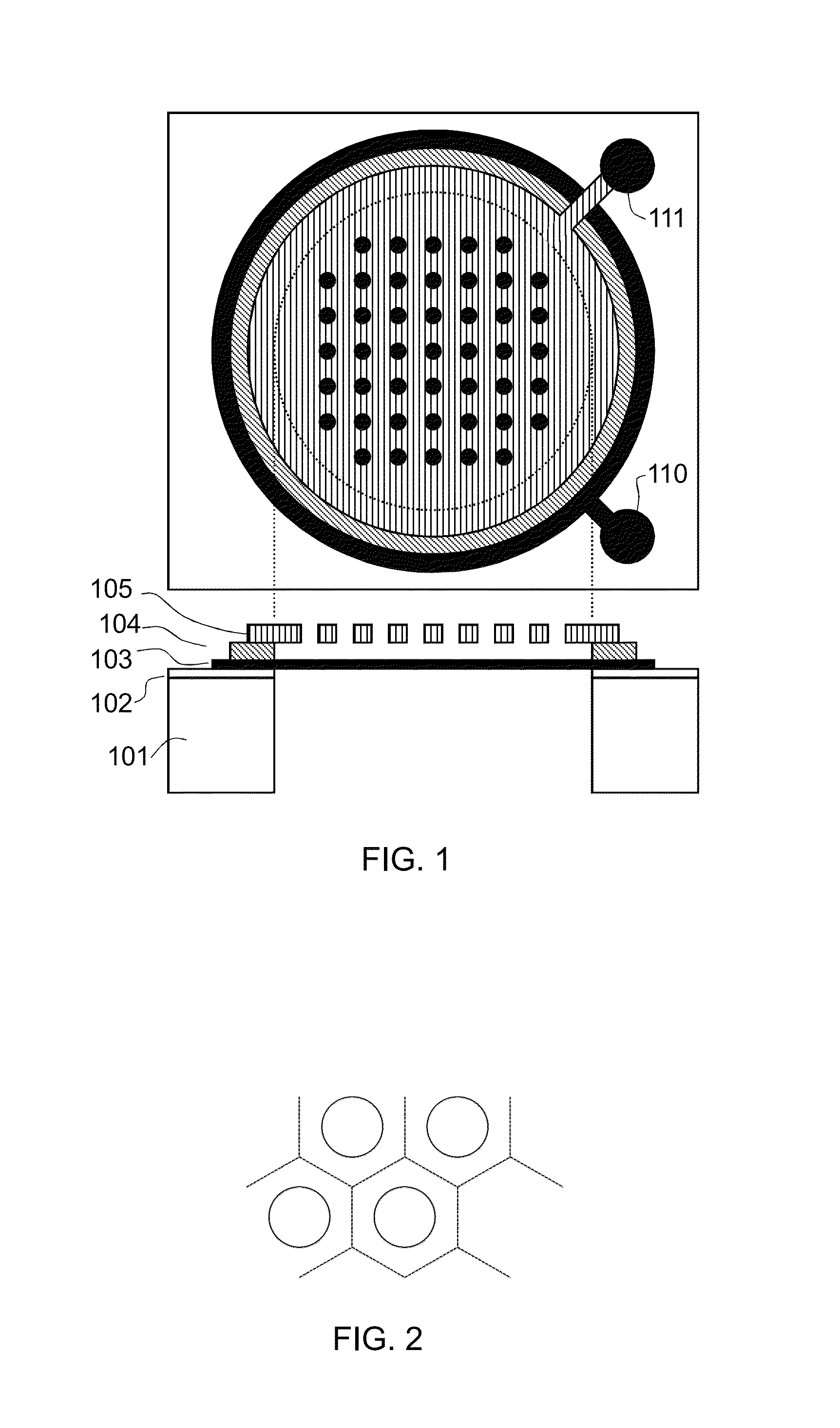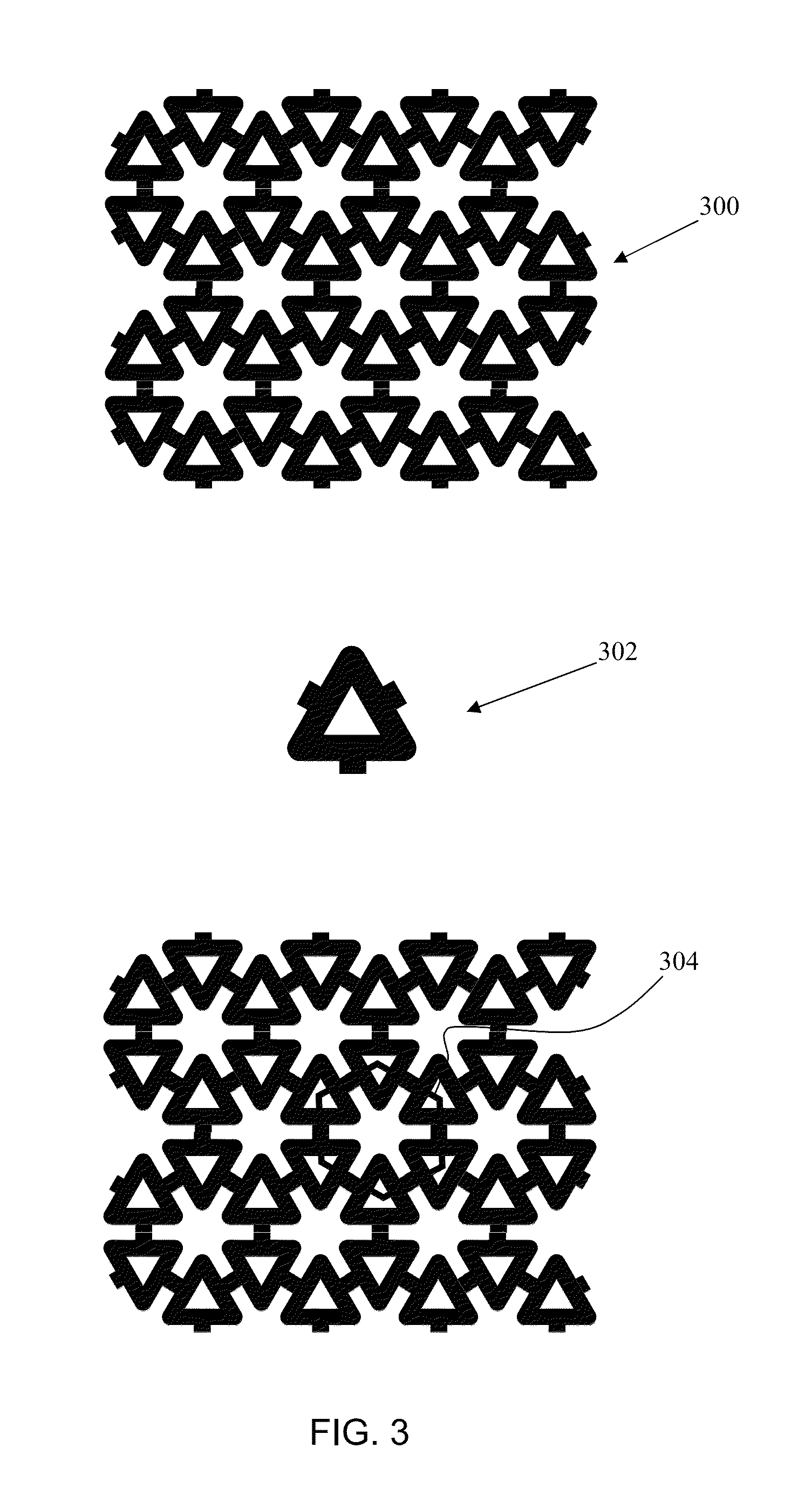Acoustic transducers with perforated membranes
a technology of perforated membranes and transducers, which is applied in the direction of electrical transducers, transducer types, and semiconductor electrostatic transducers, etc., can solve the problems of reducing the robustness of the backplate, reducing the sensor performance, and reducing the relative movement of the plates, so as to avoid the build-up of stress and increase the robustness
- Summary
- Abstract
- Description
- Claims
- Application Information
AI Technical Summary
Benefits of technology
Problems solved by technology
Method used
Image
Examples
Embodiment Construction
[0046]The invention provides a MEMS device such as a microphone, which uses a fixed perforated plate. The fixed plate has an area formed as a polygonal grid of unit cells, wherein each unit cell comprises a line of material following a path around the polygon thereby defining an opening in the centre of the polygon. The fixed plate area may be the full area of the fixed membrane.
[0047]In one aspect, the line of material forms a path along each side of a polygon which forms a track which extends at least once inwardly from the polygon perimeter towards the centre of the polygon and back outwardly to the polygon perimeter. This defines a meandering hexagon side wall, which functions as a local spring suspension.
[0048]In another aspect, the line of material has a non-uniform width with a wider width in the centre of the polygon side that at the ends of the polygon side. This defines a large opening (because the line width is narrow at the corner), but the non-uniform width enables a me...
PUM
 Login to View More
Login to View More Abstract
Description
Claims
Application Information
 Login to View More
Login to View More - R&D
- Intellectual Property
- Life Sciences
- Materials
- Tech Scout
- Unparalleled Data Quality
- Higher Quality Content
- 60% Fewer Hallucinations
Browse by: Latest US Patents, China's latest patents, Technical Efficacy Thesaurus, Application Domain, Technology Topic, Popular Technical Reports.
© 2025 PatSnap. All rights reserved.Legal|Privacy policy|Modern Slavery Act Transparency Statement|Sitemap|About US| Contact US: help@patsnap.com



